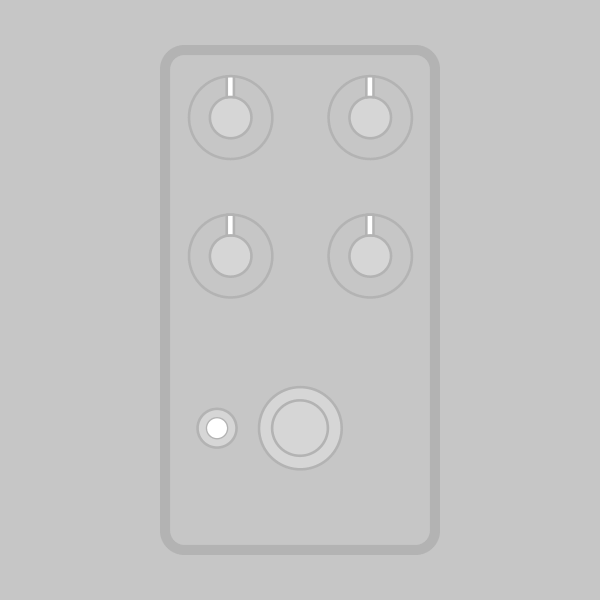
The Orpheum Germanium Fuzz is based on the original version of the Mosrite Fuzzrite, designed by Ed Sanner in Bakersfield, CA and originally released in 1966. It’s considered to be the definitive American response to the British fuzzes of the mid-1960s, a fully original circuit that stands alongside such legends as the Tone Bender and Fuzz Face. It was responsible for the classic fuzz tones on “In-A-Gadda-Da-Vida” by Iron Butterfly.
In 2022, Catalinbread released an adaptation of the germanium Fuzzrite in collaboration with the original inventor. The most notable change is the addition of a Vintage/Modern toggle switch that adds back the fullness that is taken away by the low-valued coupling capacitors, which was the major shortcoming of the original Fuzzrite. This switch makes the circuit far more versatile, and so we have incorporated it into our version.
The germanium Fuzzrite was the basis for the fuzz sub-circuit of the Acoustic 360 bass amp and 260 guitar amp. We have released projects for the full preamp as well as the standalone fuzz circuit from the amp. It’s similar to the germanium version, but uses NPN transistors (one silicon and one germanium) and has input and output buffers.
In 1968, the Fuzzrite was redesigned to use NPN silicon transistors, a change that was also taking place with the classic Fuzz Face and Tone Bender on the other side of the Atlantic. This version of the circuit was also either cloned or whitelabeled as the Orpheum Fuzz, Clark Fuzz, Guild Foxey Lady and Electro-Harmonix Axis. We have an alternate version of this project called the Orpheus Silicon if you want to build one of these circuits.